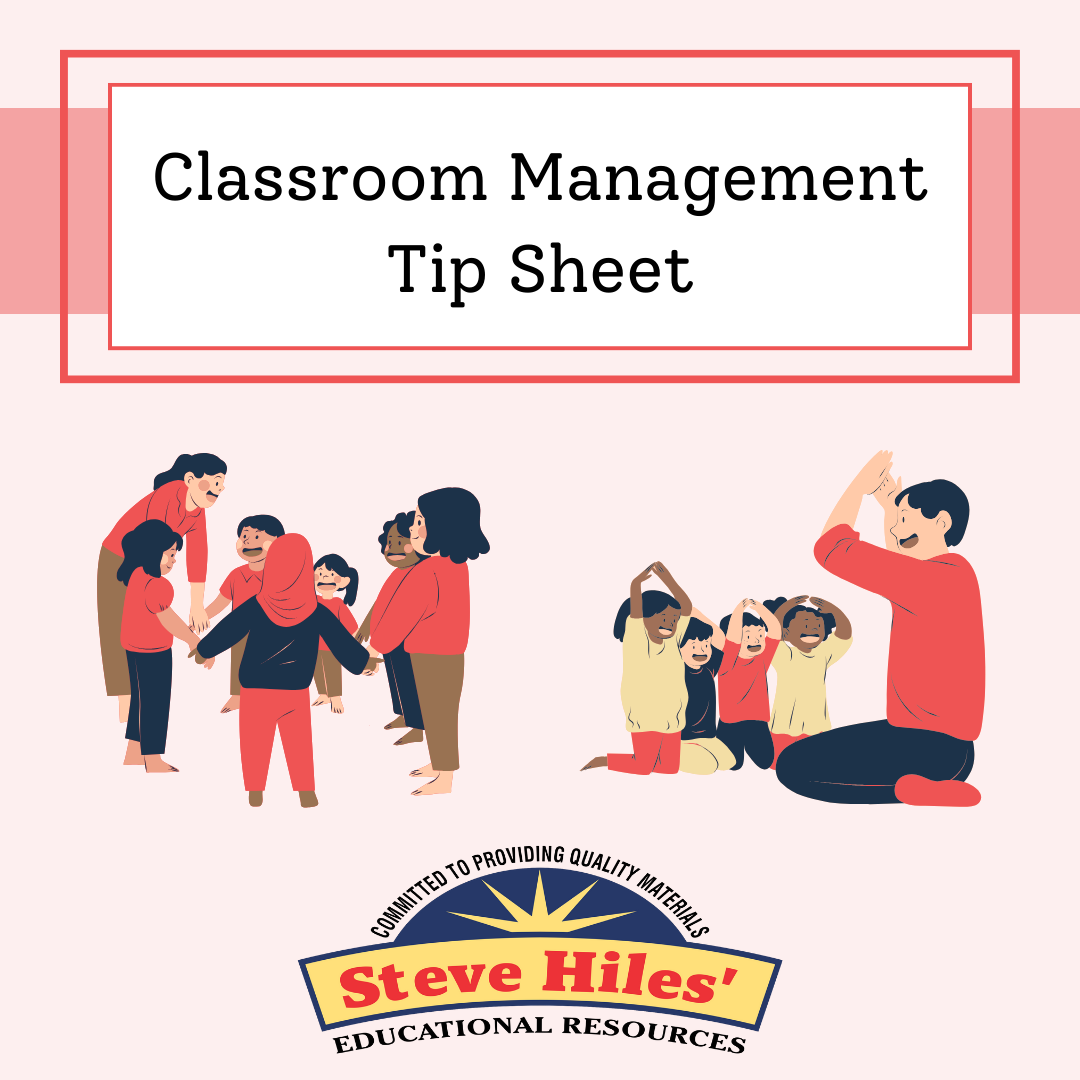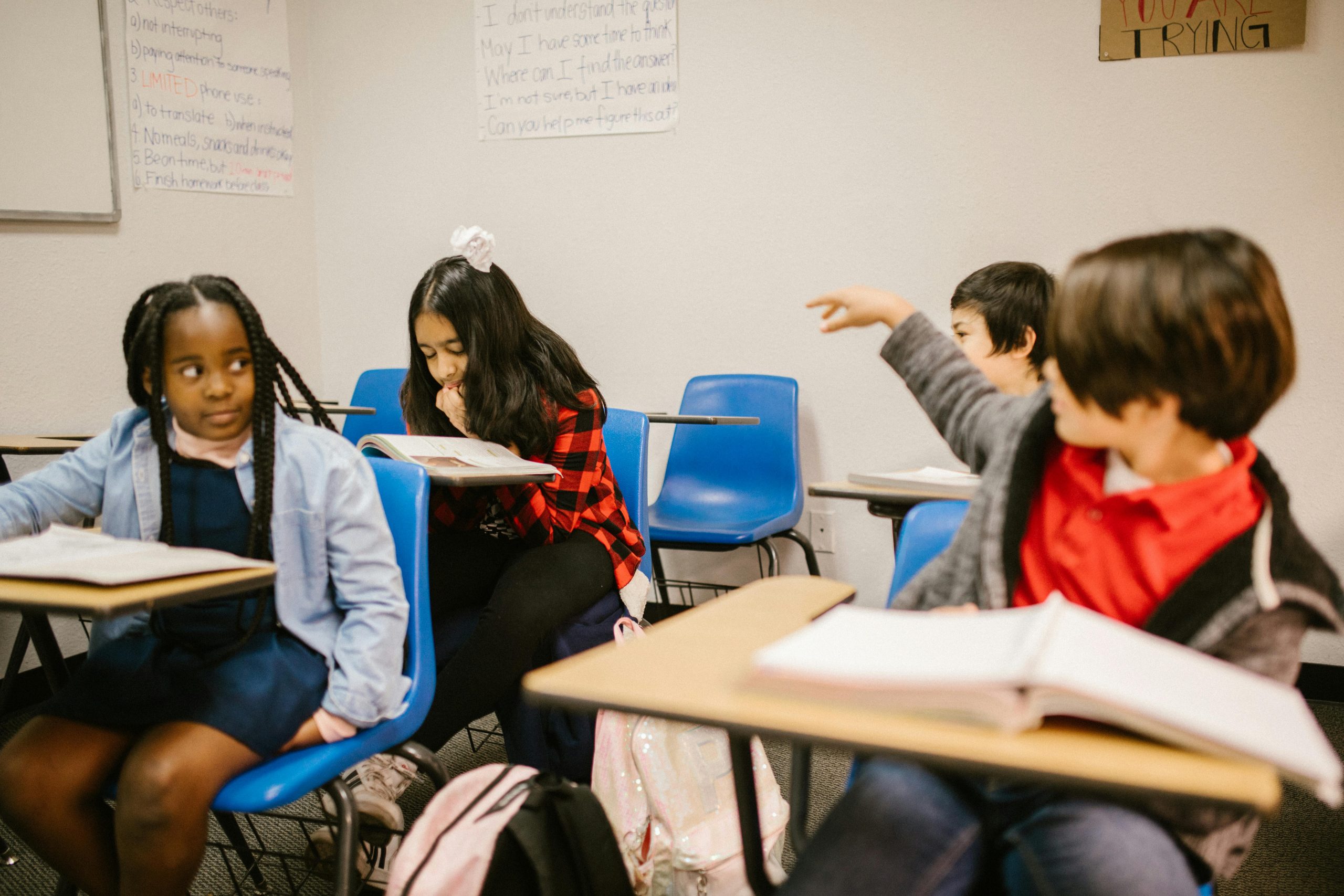Table of Contents
TogglePart 1: Foundations of the Elementary School Classroom
An elementary school classroom is much more than desks, walls, and a whiteboard. It’s the first structured environment where many children experience daily learning, community, and responsibility. For students between kindergarten and fifth grade, this space becomes their second home, shaping not just what they learn, but how they learn, and even how they feel about learning itself.
The design, culture, and management of a classroom are powerful tools in supporting children’s curiosity, creativity, and confidence. When teachers carefully craft an environment that balances structure with warmth, they create a foundation for lifelong academic success and social-emotional growth.
Why the Elementary School Classroom Matters
Think back to your first classroom. Maybe you remember colorful bulletin boards, a friendly teacher’s smile, or even the simple thrill of having your own desk. These early impressions stick with us because childhood classrooms do more than hold students; they shape identity and confidence.
For young learners, the classroom elementary environment influences:
- Focus: Organized spaces reduce distractions.
- Behavior: Clear rules and expectations promote consistency.
- Belonging: Warm, welcoming decor makes students feel at home.
- Motivation: A sense of ownership and pride in the classroom drives engagement.
In fact, studies show that well-structured elementary classrooms support higher academic achievement and lower behavioral challenges compared to environments that are cluttered, rigid, or lacking in warmth.
Elementary Classrooms Teachers: Architects of Learning
Teachers are the heart of any elementary classroom. While walls and furniture set the stage, it is elementary classrooms teachers who bring life and meaning to the space. They act as:
- Designers: Arranging layouts that support activities and transitions.
- Guides: Establishing routines and expectations.
- Role models: Demonstrating empathy, respect, and curiosity.
- Community builders: Creating an atmosphere of trust and belonging.
One of the greatest challenges teachers face is balancing structure and freedom. Too much structure can stifle creativity, while too little can lead to chaos. The most successful classroom for elementary education strikes a balance—providing security while allowing room for exploration.
The Power of Classroom Rules in Elementary Settings
Classroom rules elementary are not just about managing behavior—they set the tone for respect, responsibility, and cooperation. Effective rules are:
- Clear and simple: Written in language children understand.
- Positive: Framed as what students should do, rather than what they shouldn’t.
- Collaborative: Co-created with student input to build ownership.
- Consistent: Reinforced daily through modeling and reminders.
Examples of age-appropriate rules might include:
- Take care of yourself and others.
- Listen when someone else is speaking.
- Use kind words and actions.
- Keep hands and feet to yourself.
- Always try your best.
When rules are paired with positive reinforcement—praise, points, or classroom celebrations—they become more than restrictions; they form the backbone of classroom culture.
Elementary Classroom Layout: Designing for Success
The elementary classroom layout is one of the most powerful tools teachers have for influencing behavior and learning. Layout is about more than where desks go; it’s about designing spaces that encourage specific activities and emotional states.
Key Considerations in Layout Design:
- Visibility: Teachers should be able to see every student easily.
- Accessibility: Materials should be within reach to encourage independence.
- Flexibility: Spaces should adapt for group work, independent tasks, and movement.
- Comfort: Children need cozy spaces for reading or quiet reflection.
Popular Layout Options:
- Clusters of desks for collaboration and peer learning.
- U-shape arrangements for class discussions and visibility.
- Learning stations where students rotate between activities.
- Carpeted meeting areas for story time, community circles, or whole-group instruction.
Even in small or crowded spaces, thoughtful planning can maximize engagement and minimize disruptions.
The Role of Elementary Classroom Decor
Walk into any elementary school classroom, and you’re likely greeted by color, artwork, and creative displays. But classroom decor is more than just “cute.” It’s a teaching tool, a motivator, and a reflection of classroom identity.
Effective Elementary Classroom Decor Should:
- Celebrate student work to build pride and ownership.
- Reinforce learning goals with anchor charts, word walls, or math visuals.
- Create a welcoming mood through colors, plants, or themes.
- Avoid overstimulation, which can overwhelm younger learners.
For example, a second-grade teacher might use a classroom theme for elementary students, such as an “Under the Sea Adventure.” The decor could include ocean-themed bulletin boards, reading “coves,” and math stations marked with fish or shells. Themes make learning environments fun and memorable while reinforcing content.
Elementary Classroom Themes: Adding Identity and Fun
One of the most engaging aspects of elementary education is the creative use of themes. Elementary classroom themes serve as both decorative and instructional frameworks, making the space feel unified and exciting.
Popular elementary themes for classrooms include:
- Nature & Seasons: Trees, animals, or weather-related motifs.
- Travel & Adventure: Maps, passports, or “learning journeys.”
- STEAM: Robots, space exploration, or scientific discovery.
- Community Helpers: Firefighters, doctors, teachers, and other local heroes.
Themes can also connect to student interests. For example, a teacher might design a ballroom dancing corner or integrate movement activities inspired by programs like Voyager Academy’s elementary classrooms dance initiative. This not only reflects creativity but also fosters inclusivity by connecting learning to diverse cultural and artistic expressions.
The Importance of Classroom Elementary Culture
Beyond rules, layouts, and decor, the culture of the classroom elementary environment defines how students feel each day. Positive cultures are built on:
- Respect: Every student’s voice is valued.
- Inclusion: Students see themselves represented in materials and displays.
- Responsibility: Shared ownership of the classroom’s success.
- Joy: Fun, laughter, and creativity are part of daily learning.
Teachers who intentionally nurture this culture find that students not only achieve academically but also develop social-emotional skills essential for life.
Real-World Example: A Day in a Well-Designed Classroom
Imagine walking into a third-grade room:
- Desks are grouped into clusters of four, each with name tags and shared supplies.
- The back wall holds a rotating display of student artwork, with a word wall of vocabulary terms.
- A cozy reading nook with beanbags invites quiet time.
- A brightly decorated bulletin board lists the classroom rules elementary students co-created, framed by cheerful illustrations.
- The teacher greets each child by name at the door, setting a tone of respect and connection.
This isn’t just a decorated room—it’s a thoughtfully designed elementary classroom layout that blends physical design with emotional culture to create a holistic environment.
Part 2: Inclusion, Creativity, and Classroom Engagement
The elementary school classroom is not only a place where students learn academics—it’s also where they discover how to express themselves, collaborate, and appreciate diversity. Once the foundational layout, decor, and culture are in place, the next step is making the classroom inclusive, creative, and deeply engaging.
An engaging classroom doesn’t just capture attention; it fosters curiosity and motivates students to become lifelong learners. An inclusive classroom ensures that all children—regardless of background, learning style, or ability—feel respected and supported. Together, these elements transform a room of desks into a thriving community of learners.
How to Create an Inclusive and Engaging Elementary Arts Classroom
One powerful avenue for inclusion and engagement is the arts. From painting to music to drama, the arts allow students to express themselves in ways that academics alone may not capture. Teachers often ask: How can I create an inclusive and engaging elementary arts classroom?
Here are some strategies that work:
- Representation Matters
Display diverse artwork and music that reflect a range of cultures. Representation ensures that every child sees their identity valued. - Process Over Product
Celebrate effort and creativity instead of perfection. For example, when students create art, display a range of styles rather than highlighting only the most polished pieces. - Accessibility and Differentiation
Adapt materials for students with different abilities. Large-handled paintbrushes, noise-reducing headphones, or digital tools make the arts accessible to everyone. - Integrating Arts Across the Curriculum
The arts shouldn’t be siloed. Use them to enhance literacy (storytelling), math (patterns), or science (illustrating life cycles). This integration makes learning richer and more inclusive.
By using these methods, teachers can design an elementary classroom that values every child’s voice and nurtures creativity alongside academics.
The Role of Themes in Engagement
A major way teachers keep students excited is through elementary classroom themes. Themes give classrooms identity and create a unifying thread across subjects.
Why Themes Work
- They make learning relatable by connecting to student interests.
- They create memorable experiences.
- They build anticipation for upcoming lessons.
Examples of Popular Themes
- Space Explorers: Students become astronauts, solving “missions” in math or science.
- Detectives: A mystery theme where students uncover “clues” in reading comprehension.
- Community Helpers: Emphasizing roles like firefighters, doctors, or teachers.
- Seasonal Rotations: Fall harvests, winter wonderlands, or spring gardens.
Elementary Themes for Classrooms in Action
Another teacher could implement a “Garden of Growth” theme, where each child’s progress is tracked on a wall of paper flowers that “bloom” as they master new skills.
A fourth-grade teacher might choose a “Global Adventures” theme, decorating with maps, passports, and flags. Students “travel” to different countries during the year, tying geography, history, and literature into one big journey.
Themes, when done thoughtfully, make the classroom elementary space feel alive and engaging, while reinforcing academic goals.
Classroom Themes for Elementary Arts
In arts classrooms specifically, themes can be especially powerful. Consider:
- Music Around the World: Each month highlights instruments and songs from a different culture.
- Art Through Time: Exploring different eras—prehistoric cave paintings, Renaissance masterpieces, modern digital art.
- Dance Journeys: Connecting movement to storytelling.
A standout example is ballroom dancing at Voyager Academy elementary classrooms. By introducing dance as both a physical and cultural activity, Voyager Academy used movement to enhance teamwork, confidence, and appreciation for global traditions. Programs like these show how arts can enrich the elementary school classroom in unique ways.
Classroom Management Strategies for Elementary Engagement
A beautiful classroom and fun themes mean little without effective management. Classroom management strategies for elementary are critical to creating a safe and engaging learning space.
1. Positive Reinforcement
Instead of focusing on punishment, emphasize rewarding positive behaviors. Points systems, stickers, or verbal praise can work wonders.
2. Clear Expectations
Students should know exactly what is expected—whether it’s how to line up, participate in group work, or handle materials. Posting rules visually helps reinforce them.
3. Responsive Redirection
Rather than scolding, redirect students gently. For instance, if two children are talking off-task, move them into a collaborative assignment where their energy can be productive.
4. Structured Routines
Consistency builds security. Predictable daily schedules, entry routines, and closing rituals help students transition smoothly.
5. Student Involvement
Let students help create routines or classroom agreements. When children feel ownership, they are more likely to follow through.
Example: A Behavior Management System in Action
In one elementary classroom, the teacher uses a color-coded system:
- Green = ready to learn.
- Yellow = warning.
- Red = reflection time.
Students can self-monitor and move their own cards, teaching responsibility and accountability.
Such strategies ensure that the elementary classroom remains inclusive, respectful, and conducive to learning.
Engaging All Learners Through Creativity
Engagement isn’t just about fun—it’s about designing learning experiences that connect with different student needs. In a classroom for elementary education, engagement should reach visual, auditory, kinesthetic, and social learners alike.
Examples include:
- Hands-on activities: building models, science experiments, or art projects.
- Movement-based learning: acting out vocabulary words or using math hopscotch.
- Peer teaching: older students mentoring younger ones within the same room.
- Technology integration: using tablets for interactive lessons or virtual museum tours.
By layering creative strategies, teachers ensure that no student feels left out or disengaged.
The Intersection of Inclusion and Classroom Themes
Inclusivity and creativity are not separate—they feed into each other. For instance, a community helpers theme can highlight diverse professions, ensuring children of all genders, cultures, and abilities see themselves represented.
Similarly, a dance program like Voyager Academy’s acknowledges cultural diversity while promoting confidence and teamwork. In these examples, engagement and inclusion blend seamlessly, making the elementary classrooms not just fun, but equitable.
The Role of Teachers as Facilitators of Engagement
Just as elementary classrooms teachers are architects of the physical environment, they are also facilitators of engagement. Their role is to:
- Curate activities that invite curiosity.
- Scaffold tasks so that all students can participate meaningfully.
- Encourage collaboration while respecting individuality.
- Continuously adapt based on student feedback.
Teachers who prioritize both inclusion and creativity transform the classroom into a space where students are eager to show up, ready to learn, and proud to contribute.
Part 3: Long-Term Benefits of the Elementary Classroom Environment
The elementary school classroom is where children spend some of their most formative years. It’s in these spaces that they learn to read, count, collaborate, solve problems, and navigate social dynamics. But the impact of these classrooms doesn’t end when children leave for middle school—it extends into adolescence, adulthood, and even society as a whole.
A well-designed elementary classroom is not just about immediate academic outcomes. It’s about planting seeds of resilience, creativity, and confidence that continue to grow long after the last bulletin board is taken down. In this final section, we’ll explore how classroom environments shape long-term well-being, how safety and trauma-informed design come into play, and why the elementary classroom remains central to community identity.
The Elementary Classroom as a Foundation for Lifelong Learning
The classroom for elementary education provides the earliest structured environment where children interact with peers, teachers, and ideas on a daily basis. When these experiences are positive, they instill habits that last a lifetime.
Lasting Impacts of Positive Classrooms:
- Confidence in learning: Children who feel supported are more willing to take academic risks.
- Resilience: Environments that normalize mistakes and celebrate effort teach perseverance.
- Collaboration skills: Group activities prepare students for teamwork in future workplaces.
- Curiosity: Classrooms that spark imagination encourage lifelong learning beyond school walls.
The ripple effect of a strong elementary classroom can be seen in higher graduation rates, better mental health, and more engaged citizens.
The Role of Classroom Culture in Emotional Well-Being
We often talk about test scores and academic growth, but equally important is how the elementary school classroom supports emotional well-being.
Emotional Benefits of Positive Classrooms:
- Students feel safe to express emotions and seek help.
- Teachers model empathy and kindness, shaping students’ social skills.
- A sense of belonging reduces anxiety and fosters confidence.
- Inclusive classrooms help children embrace differences in culture, ability, and background.
Classrooms that balance structure with care prepare children not only to learn but to thrive emotionally.
Learning from Tragedy: Safety and Trauma-Informed Design
When discussing classrooms, it’s impossible to ignore how tragedies can shape the way we think about safety. Events like the Robb Elementary classroom shooting have highlighted the urgent need for trauma-informed approaches to design and culture.
While these discussions are sensitive, they are vital. Teachers, school leaders, and policymakers are rethinking how classrooms can both protect and comfort children.
Safety Measures in Classroom Design:
- Clear exits and lockdown procedures that don’t instill fear but build preparedness.
- Secure entry systems and communication technology.
- Design features like furniture placement that allow visibility and protection.
Trauma-Informed Teaching Practices:
- Prioritizing emotional check-ins each day.
- Building safe spaces in the room where students can decompress.
- Training teachers in recognizing trauma responses and offering support.
By combining safety with compassion, the elementary school classroom becomes a haven, even in uncertain times.
Classroom Management Strategies for Long-Term Growth
Earlier, we explored classroom management strategies for elementary engagement, but it’s worth noting how these approaches create ripple effects that extend well into later life.
Lasting Impacts of Strong Classroom Management:
- Responsibility: Students learn accountability for their actions.
- Self-regulation: Consistent routines teach impulse control and patience.
- Respect for community: Co-created rules and agreements instill democratic values.
- Confidence: Students who understand expectations feel more secure.
For example, something as simple as a morning meeting routine builds social-emotional skills that students carry with them into adulthood, whether in workplaces, families, or civic life.
Elementary Classroom Themes as Community Identity
We often think of elementary classroom themes as fun or decorative, but they also shape identity and memory. Many adults vividly remember themed classrooms from their childhood—spaces that felt magical, inspiring, or deeply personal.
Themes can also reflect broader community values. For example:
- A classroom in a farming town might use an “agriculture and seasons” theme.
- Urban classrooms may embrace multicultural themes reflecting neighborhood diversity.
- Arts-focused schools might feature rotating displays of student-created murals.
In this way, the elementary classroom becomes a cultural mirror, reinforcing pride in community and identity.
The Evolving Role of the Elementary Classroom
As education changes, the elementary school classroom continues to evolve. Technology, flexible seating, and new pedagogies are reshaping how children learn. Yet, the core purpose remains the same: creating safe, inspiring environments that nurture both minds and hearts.
Trends to Watch:
- Hybrid classrooms combining physical and digital tools.
- Outdoor classrooms that connect learning with nature.
- Flexible layouts that adjust to group, independent, and movement-based activities.
- Global connections where students collaborate virtually with peers worldwide.
These innovations ensure that the classroom keeps pace with an ever-changing world while still honoring the timeless needs of children.
The Community’s Role in Supporting Classrooms
While teachers carry much of the responsibility, the success of an elementary school classroom depends on broader support. Parents, administrators, and communities each play vital roles.
- Parents: Reinforce classroom rules and encourage respect for learning at home.
- Administrators: Provide resources for safe, flexible layouts and professional development.
- Communities: Offer partnerships, mentorship, and after-school programs to extend learning.
When all stakeholders collaborate, the classroom becomes not just a school space but a cornerstone of the community.
Real-World Example: A Community-Supported Classroom
At one school, a local business sponsored flexible furniture for first-grade classrooms. Parents volunteered to build a community library corner. Teachers incorporated a “local heroes” theme, celebrating firefighters, doctors, and neighborhood leaders.
The result? Students felt proud, safe, and motivated, while the classroom reflected both their personal growth and the identity of the wider community.
The Elementary Classroom as a Legacy
In the end, an elementary school classroom is much more than a temporary space for learning ABCs and multiplication tables. It’s where children learn how to treat others, how to express themselves, and how to persist when challenges arise.
The lessons of these classrooms—both academic and emotional—stay with children for a lifetime. They influence how students see themselves, how they engage with others, and how they contribute to society.
Conclusion: The Lifelong Power of the Elementary Classroom
The elementary school classroom is the seedbed of growth, imagination, and resilience. From thoughtful layouts and creative themes to inclusive practices and trauma-informed care, every detail matters. When teachers, families, and communities come together to support these spaces, they create more than classrooms—they create launchpads for confident, compassionate, and curious future citizens.
The long-term benefits are clear: stronger academic outcomes, healthier emotional development, and communities strengthened by generations of learners who were nurtured, challenged, and inspired in their earliest classrooms.
As we look toward the future of education, one truth remains constant: investing in the elementary classroom is investing in the future itself.
FAQs
1. What is an elementary school classroom?
An elementary school classroom is a learning environment for children in grades K–5, designed to support academic growth, social-emotional development, and creativity.
2. How do classroom themes benefit elementary students?
Themes create a cohesive, engaging environment that sparks curiosity, reinforces learning concepts, and helps students feel a sense of ownership and belonging.
3. What are effective classroom management strategies for elementary classrooms?
Key strategies include positive reinforcement, consistent routines, co-created rules, structured transitions, and differentiated approaches to meet all learners’ needs.
4. How can teachers make an elementary arts classroom inclusive?
By providing diverse materials, celebrating effort over perfection, adapting tools for accessibility, and integrating arts across the curriculum to engage all learning styles.
5. Why is the elementary classroom important for lifelong learning?
It sets the foundation for confidence, collaboration, resilience, and curiosity—skills and habits that influence academic success and personal growth well beyond elementary school.









